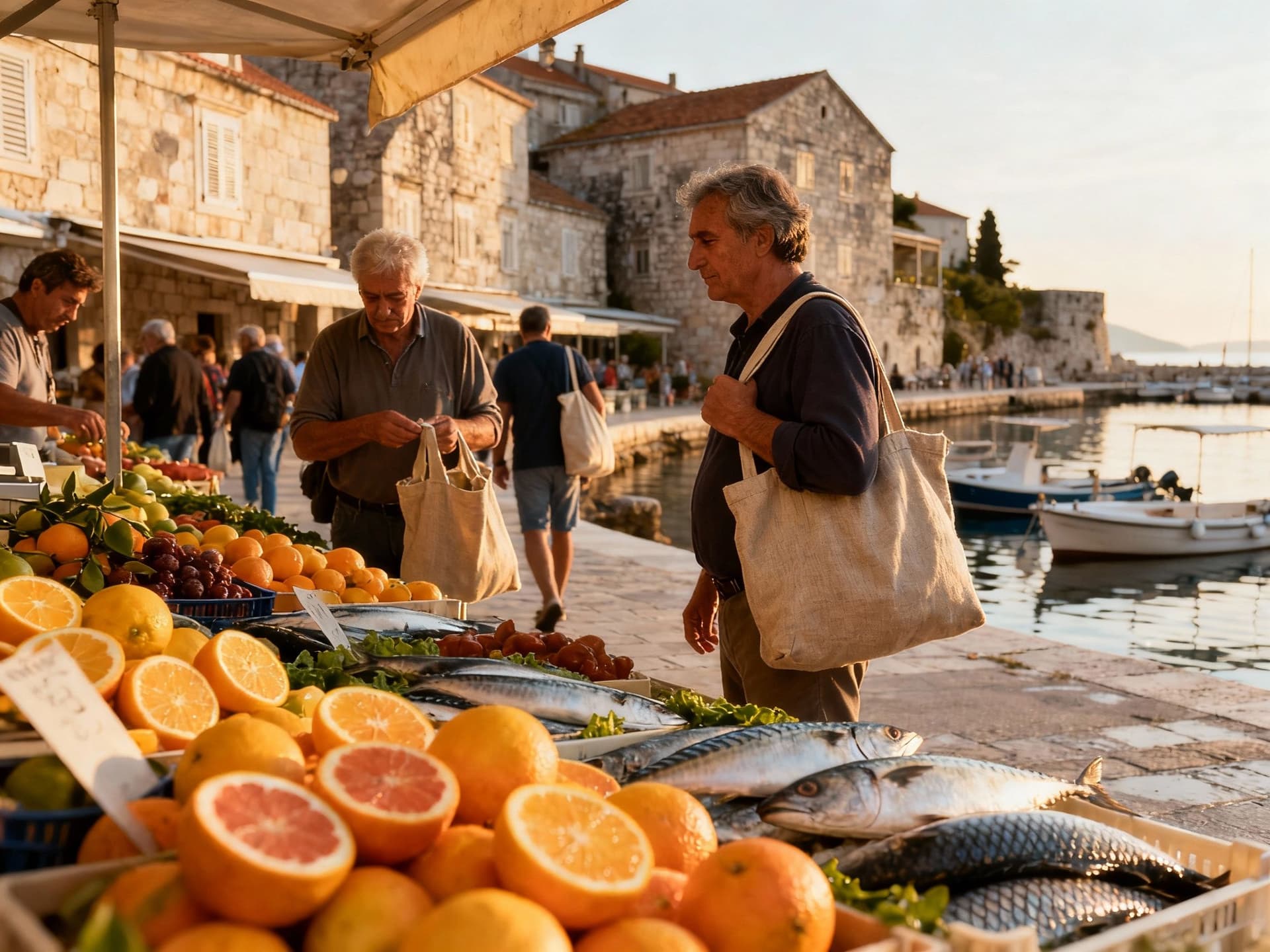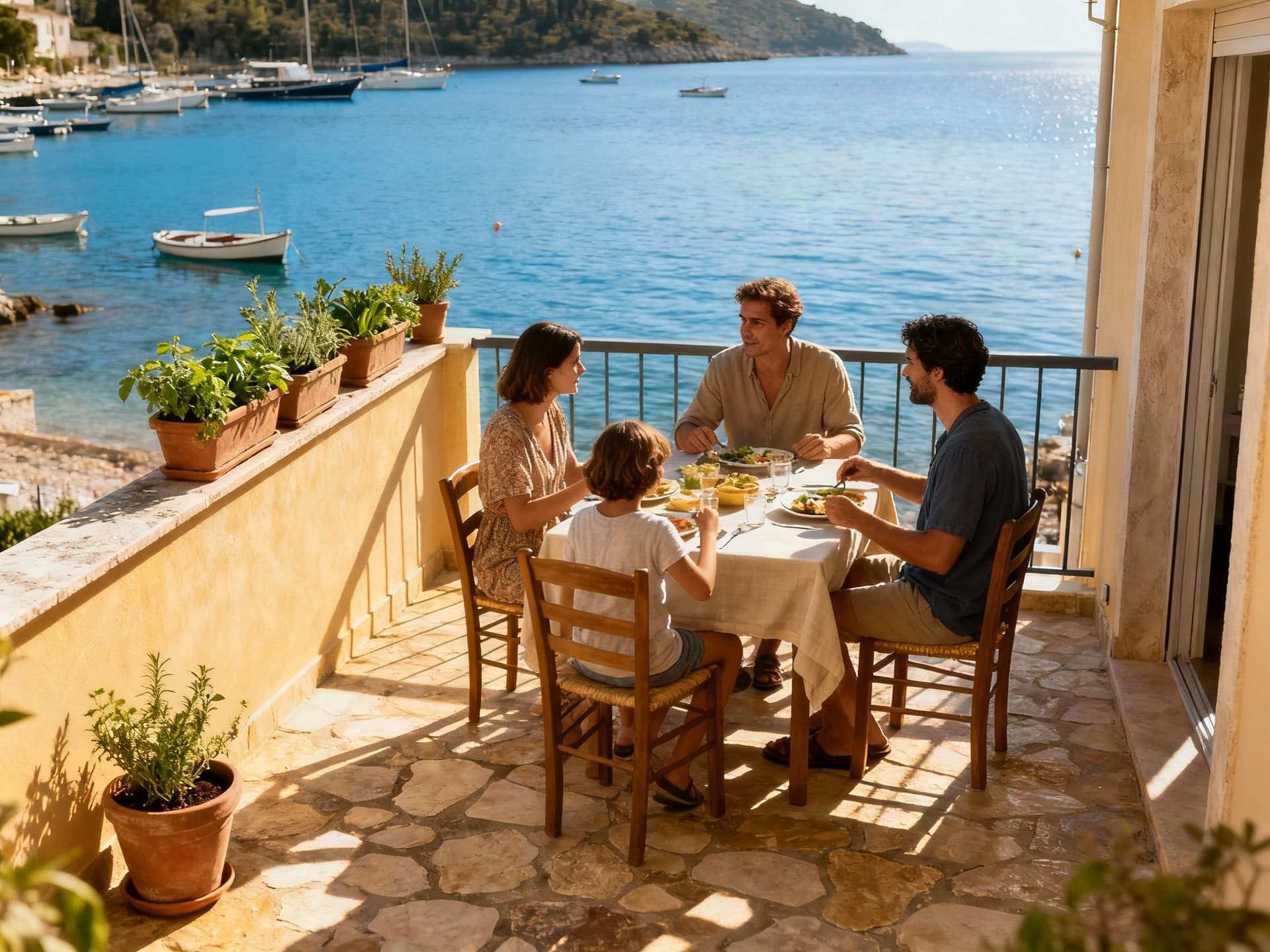Why Croatia’s Summer Price Tag Hides Year‑Round Yield
Croatia’s summer price tag conceals growing year‑round demand and policy shifts; blend coastal short‑lets with continental long‑lets and stress‑test yields under new tax rules.
Imagine waking on a stone-paved street in Split, espresso steam curling as fishermen unload the morning catch, then cycling to a quiet bay where terraces glow with midday life. Croatia’s coast reads like a postcard — sunlit promenades, lacework of islands, and pockets of year-round neighbourhoods — but the investment story beneath that romance isn’t obvious. Prices spike in summer snapshots; yields and resilience reveal themselves in off-season data, transport links and municipal initiatives that change the arithmetic of ownership.
Living the Croatia lifestyle

Croatia’s daily rhythm is a blend of Adriatic leisure and compact, efficient urban life. In coastal towns like Zadar, Trogir and Rovinj you’ll hear seagulls and boat engines at dawn, then find neighbourhood markets filled with pršut and freshly caught fish by mid‑morning. Zagreb pulses differently — cafés on Ilica, weekday tram life, weekend farmer markets. For buyers this means lifestyle choices map directly to rental demand patterns: coastal short-lets dominate summer peak demand, while Zagreb and continental towns show steadier year-round occupancy.
Coastal microclimates: not all seaside is equal
A ‘coastal premium’ is real, but it’s uneven. Dubrovnik and Hvar command top prices and headline exposure; smaller ports such as Šibenik, Trogir and the island towns of Brač or Korčula offer lower entry prices with comparable peak‑season occupancy. Look at local marina access, ferry frequency and hospital catchments: these infrastructure differences compress into measurable rental and resale outcomes.
Food, market life and seasonal texture
Markets drive neighbourhood life. Opatija’s promenade, Split’s Pazar and Dubrovnik’s local bakeries sustain year-round footfall that supports long-stay rentals and local retail — and that footfall has been growing: Croatia recorded roughly 21.3 million visitors in 2024, with clear increases in pre- and post-season travel, signalling expanding shoulder-season demand. That shift softens seasonality risk for well-positioned assets.
- Lifestyle highlights that matter to returns: • Split’s Pazar & Riva promenade — steady demand for 1–2 bedroom rentals • Zagreb’s Donji Grad — corporate and student tenancy year-round • Šibenik & Trogir — lower price per sqm, reliable summer occupancy • Brač and Korčula ferry links — island demand with managed seasonality • Opatija & Istria inland towns — wellness tourism and longer stays
Making the move: practical considerations

The emotional pull of terraces and sea views must meet numbers. Recent listings and government statistics show swift price appreciation in new builds — for example, reported new apartment prices jumped materially in early 2025 — which affects entry cost and forward yield calculations. Buyers should measure price per square metre against probable net yields after local taxes, management and seasonality-adjusted occupancy.
Property styles and cashflow profiles
Stone-built town‑centre apartments favour short‑let demand and lower refurbishment costs, but face stricter zoning and higher maintenance. New builds offer energy efficiency and easier management for long leases, appealing to investors targeting net yields via longer contracts. Match product to strategy: short‑let operators need proximity to waterfronts and walking routes; long‑stay portfolios need schools, healthcare and transport catchments.
How local expertise converts lifestyle into an investment:
- 1. Use a local agency that tracks eVisitor and occupancy metrics to forecast shoulder‑season demand. 2. Request recent busy‑season and off‑season P&L from property managers before bidding. 3. Prioritise properties within short walks of markets or transport — these keep occupancy higher outside July/August. 4. Stress‑test yields assuming 40–60% summer occupancy uplift, not 100% peak months. 5. Factor expected municipal charges and winter maintenance into annualised cashflow.
Insider knowledge: what expats wish they’d known
Expat buyers often underrate policy shifts. Croatia has signalled a move to shift tax burdens onto property stock to tackle housing availability and short-let distortions; proposed rates and exemptions (e.g., for properties rented more than ten months) materially change net yields for short‑term operators. Ask whether your asset will qualify for exemptions and model yields under the proposed tax bands.
Cultural and seasonal realities that change how you live
Language, membership of local associations and simple gestures — such as shopping at the green market on Saturdays — speed integration and tenant sourcing. Expect a quieter winter: many coastal towns pivot to local community life and maintenance works, which is perfect for renovations but means lower rental demand. Buyers who embrace off‑season ties to local businesses often unlock longer leases and community goodwill that stabilise returns.
- Local red flags to watch for: • Poor ferry or bus schedules — kills off‑season occupancy • Properties classified as non-residential — limits rental possibilities • Unresolved building permits for restorations • High concentration of short‑lets on one street — regulatory risk • Lack of winter heating or insulation — unexpected maintenance costs
Long view: when lifestyle meets portfolio logic
Tourism growth beyond peak season and tighter property taxation reshape Croatia’s return profile toward resilience rather than pure seasonal spikes. For portfolio investors, that means blending coastal short‑let assets with continental or capital city long‑lets to smooth cashflow and reduce correlation to any single summer. Municipal investments in ports and transport are measurable factors that often precede capital appreciation.
Three data-driven decisions to make next
- 1. Pull recent eVisitor or local occupancy exports for a 3‑year rolling period to model true seasonal variance. 2. Compare price per sqm in headline towns against nearby secondary ports to find entry points with similar demand profiles. 3. Recalculate net yield with proposed property tax regimes, using conservative occupancy (50–60%) and realistic management costs.
Conclusion: Croatia’s romance is real, but so is the arithmetic. Fall in love with stone streets and market mornings — then insist on the data that turns that feeling into an investable asset. Work with agencies who can produce occupancy exports, explain local tax implications and show infrastructure roadmaps. Do that, and the coastal premium becomes a deliberate allocation, not a speculative bet.
Norwegian market analyst who relocated from Oslo to Mallorca in 2016, guiding Northern buyers through regulatory risk, currency hedging, and rentability.


